Strength, Ships and Organization as the United States enters the Second World War in December 1941.
US Navy in the Atlantic and the Pacific.
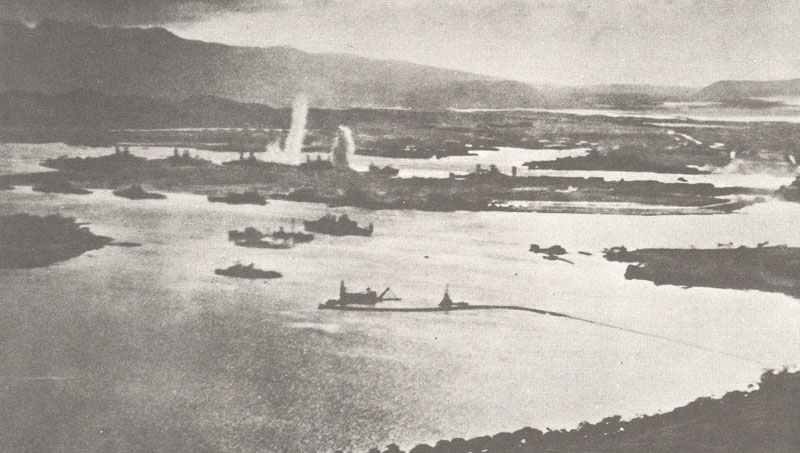
US Navy in WW2
Table of Contents
The United States Navy played a crucial role in World War II, particularly in the Pacific Theater.
Overview
Pearl Harbor: The Japanese attack on Pearl Harbor on December 7, 1941, prompted the US to enter the war.
Pacific campaigns: The Navy was instrumental in major battles like Midway, Coral Sea, Guadalcanal, and the Philippines Sea.
Island hopping strategy: The Navy supported the ‘island hopping’ campaign to capture strategic islands across the Pacific.
Atlantic operations: The Navy also played a significant role in the Battle of the Atlantic, protecting convoys and combating German U-boats.
D-Day: Naval forces provided crucial support during the Normandy landings in June 1944.
Aircraft carriers: The war saw the rise of aircraft carriers as the dominant naval weapon, replacing battleships.
Submarines: US submarines were highly effective in disrupting Japanese supply lines.
Amphibious operations: The Navy developed and perfected amphibious landing techniques.
Naval aviation: The war saw significant advancements in naval aviation technology and tactics.
Technology: Radar, sonar, and other technological innovations were widely adopted.
Expansion: The US Navy grew exponentially during the war, becoming the world’s largest naval force.
Victory in Japan: Naval forces played a key role in the final stages of the war against Japan, including the atomic bombings.
The US Navy’s contributions were vital to the Allied victory in World War II, particularly in defeating Japan in the Pacific.
Strength of the US Navy in December 1941
In late 1941, the US Navy consisted of:
- 17 battleships (+15 under construction): 1 Arkansas (1912), 2 New York class (1914), 2 Nevada class (1916), 2 Pennsylvania class (1916), 3 New Mexico class (1917-1919), 2 California class (1920-1921), 3 Colorado class (1921-1923), 2 North Carolina class (1941)
- 7 aircraft carriers (+11 under construction): 2 Lexington class (1927), 1 Ranger (1933), 3 Yorktown class (1937-1941), 1 Wasp (1941)
- 18 heavy cruisers (+8 Baltimore class under construction): 2 Pensacola class (1929-1930), 6 Northampton class (1929-1930), 2 Indianapolis class (1932-1933), 7 Astoria class (1934-1937), 1 Wichita (1939)
- 19 light cruisers (+32 Cleveland class under construction): 10 Omaha class, 7 Brooklyn class, 2 Helena class
- 6 anti-aircraft cruisers (4 in service, 2 nearly ready)
- 171 destroyers (+188 Benson, Livermore and Fletcher class under construction): 1 Allen (1917), 71 Flush-Deckers (1918-1922), 8 Farragut class (1934-1935), 12 Mahan class (1936-1937), 8 Porter class (1936-1937), 5 Somers class (1938-1939), 2 Dunlop class (1938), 19 Gridley class (1938-1940), 38 Benson and Livermore class (1940-1941)
- 114 submarines (+79 Gato class under construction): 8 ‘O’ class (1918), 19 ‘R’ class (1918-1919), 38 ‘S’ class (1919-1924), 3 Barracuda class (1924-1925), 1 Argonaut mine layer (1928), 2 Nautilus class (1930), 1 Dolphin (1932), 2 Cachalot class (1934), 10 ‘P’ class (1935-1937), 16 ‘new S’ class (1937-1939), 12 ‘T’ class (1941-1942)
US Navy in the Atlantic
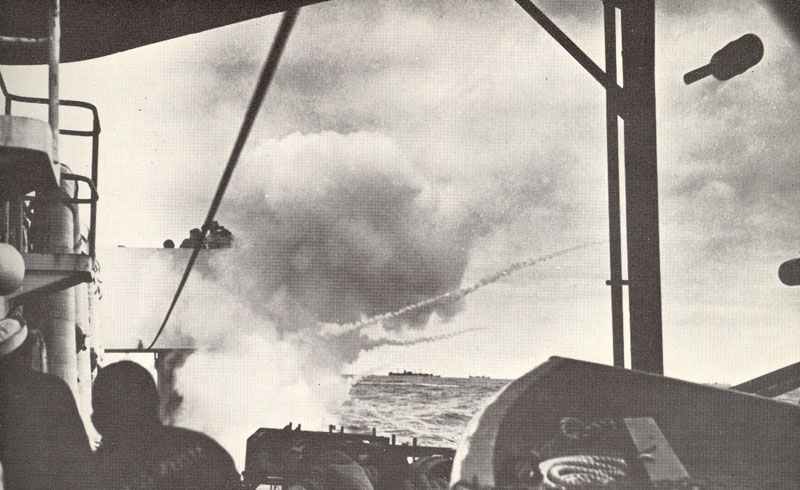
The US Navy was in many ways unprepared for war when the Japanese brought America into WW2 with their attack on Pearl Harbor. Too great an emphasis was placed upon the battleship to the exclusion of anti-submarine warfare, which was essential to success in the Battle of the Atlantic. It was to the great credit of the US Navy that in a remarkably short space of time it was able to reorganize its forces and, in conjunction with the Royal Navy, defeat the U-boat menace.
Even before America’s entry into the war, the pro-British Roosevelt government had provided aid to the British which included the 100 destroyers of the ‘lend-lease’ agreement and the escort of convoys by US Navy vessels.
As early as February 1941 a Support Force had been set up from the Atlantic Fleet, consisting of three destroyer squadrons and four patrol squadrons of 12 Catalina or Mariner aircraft each. By the end of the following month this force was 27 destroyers strong and was concentrated on the Argenta to Iceland sector of the transatlantic convoy route.
In 1942 the United States Atlantic Fleet consisted of seven battleships, one fleet and seven escort carriers, three heavy and nine light cruisers, and 76 destroyers.
A major problem facing the Navy planners was the allocation of resources: to many Americans the Pacific was the most important area of operations and although the Atlantic was not stinted of supplies, the main effort was justifiably devoted to the Pacific Command. Nevertheless, by 1944 seven escort carrier groups had been formed with 7 carriers and 97 destroyers.
In spite of the British example the American Navy, under the direction of Admiral King, was reluctant to develop the convoys system and suffered very heavy losses. During the spring and summer of 1942 the German U-boats decimated shipping off the Atlantic sea-board: during May alone, over 450,000 tons of Allied shipping was sunk off the American coast. Like the Royal Navy the US Navy gained the upper hand over the U-boats by adopting the convoy system, increasing the numbers of escort vessels and introducing new anti-submarine devices such as Asdic and ‘Huff-Duff’.
The organization of the US Atlantic Fleet was initially a hurriedly improvised affair but once was declared efforts were made to rationalize the Fleet’s organization. Originally, the US Atlantic coast was divided into a number of coastal naval districts, and there were seven of these guarding the vast area of the eastern seaboard stretching from Canada to Florida. These were abolished and replaced by sea frontiers on 1 July 1942. A sea frontier was an area of ocean extending out to sea from a definite section of the coast to a distance of over 200 miles (ca. 322 km). In all there were four sea frontiers, three of which were relevant to the fight against the U-boat: the Canadian Coastal Zone, the Panama Sea Frontier, and most important of all, the Eastern Sea Frontier. The commanders of each of these areas controlled all the vessels inside them for the duration of their voyage within the sea frontier.
Although the idea of appointing one officer responsible for conducting the U-boat war was discarded, Admiral King set up the 10th Fleet in May 1942 under his own command ‘to exercise unity of control over US anti-submarine operations in that part of the Atlantic under its strategic control’. This was a further step in the process of ironing out the series of hasty improvisations created to meet the needs of the moment. The basic function of this force was to destroy U-boats, protect allied and neutral shipping and also to supervise training in anti-submarine methods.
By early 1944 the US Navy switched most of its resources to the Pacific, although convoy duties continued and valuable support was given to the Army during the Normandy landings in June 1944.
US Navy in the Pacific
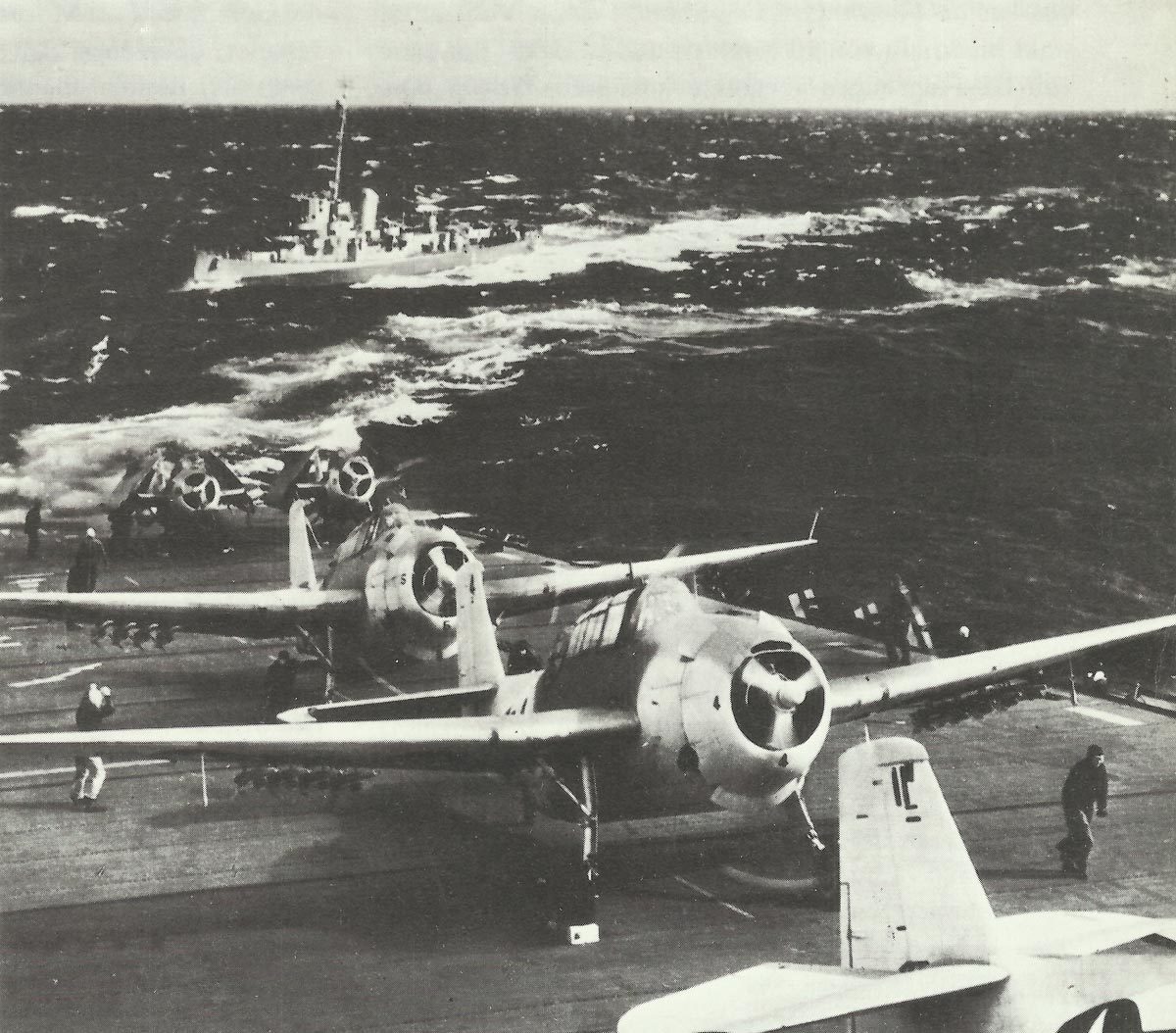
The weight of American naval effort was directed to the Pacific and, in this theater of war, naval power, usually expressed in terms of carrier-based aircraft, was to be absolutely crucial. The great influence of American manufacturing capacity was nowhere more clearly shown than in the Pacific naval battles, where the US superiority in building aircraft carriers quickly became the decisive factor.
Fleet strengths in the Pacific (December 1941):
| Great Britain with Dominions | U.S.A. | Netherlands | Free-French | Japan | |
|---|---|---|---|---|---|
| Battleships | 2 | 9 | - | - | 10 |
| Aircraft carriers | (1 under repairing) | 3 | - | - | 10 |
| Heavy cruisers | 1 | 13 | - | - | 18 |
| Light cruisers | 7 | 11 | 3 | 1 | 18 |
| Destroyers | 13 | 80 | 7 | - | 113 |
| Submarines | - | 56 | 13 | - | 63 |
At the beginning of the Pacific War, the United States Pacific Fleet based at Pearl Harbor consisted of eight battleships and three aircraft carriers. After the attack on 7 December the Japanese sunk four battleships, severely damaged three others, and one was beached.
In all, 2403 Americans were killed and 1176 wounded. Fortunately, the three fleet carriers, Enterprise, Lexington and Saratoga were absent from Pearl Harbor and survived unscathed along with five cruisers and twenty-nine destroyers to form the nucleus of the new expanded Pacific Fleet.
Naval building had been increasing in tempo since the ‘Two Ocean’ Act of 1940, but the Navy was hard-put to match the Japanese forces in the aftermath of Pearl Harbor. The immediate reaction of the United States was to construct, with great speed, four fast carriers of the Essex class (which carried 90 aircraft each) and five carriers carrying 40 aircraft each.
After the stalemate of the Coral Sea and the victory of Midway in the summer of 1942, the initiative lay with the US Navy, and it rapidly brought into service an enormous tonnage of new warships. The defeat of Japan then became inevitable. The attempts of the Japanese fleet to inflict a large-scale defeat on the American Navy at the battle of the Philippine Sea in June 1944 and the battle of Leyte Gulf later that year, were both disasters and hastened American victory.
There were three basic layers to the US Navy’s success in the Pacific:
The first was its carrier fleet, and the creation of such organizations as the Fast Carrier Task Forces based upon this strength. A total of 27 new carriers was completed before the end of hostilities, and over 75,000 aircraft were delivered to the Navy as a whole between 1940 and 1945. Naval aviation personnel strength went from 10,923 (2,695 of whom were pilots) in 1940 to 437,524 (with 60,747 pilots) by August 1945.
The second layer was the development of techniques of amphibious landing. Over 66,000 landing craft were built during the war, and the vast majority were used in the Pacific.
Thirdly, there was the submarine war. By the summer of 1945, Japan had been destroyed economically by the most effective submarine blockade in history. In all, 228 submarines entered service during the war, and 60 were lost; 4,000,000 gross tons of Japanese shipping was sunk.
In December 1941, the Navy had a combined strength of 337,274 officers and men; by 1945, there were 3,383,196 personnel of whom 1,574,614 served afloat.
References and literature
Flotten des 2. Weltkrieges (Antony Preston)
Seemacht – eine Seekriegsgeschichte von der Antike bis zur Gegenwart (Elmar B. Potter, Admiral Chester W.Nimitz)
The Armed Forces of World War II (Andrew Mollo)


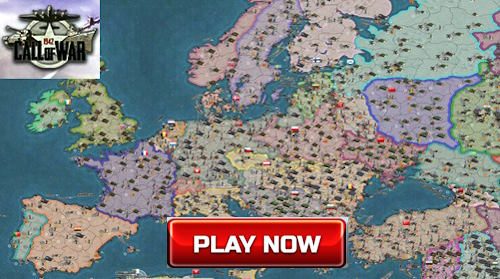

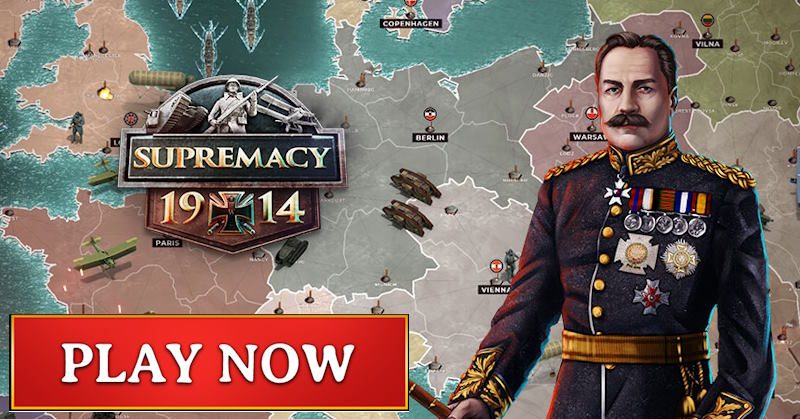




Unfortunately many u.s. sailors and many more merchant marines died as a direct result of the lack of military ability of Adm. King – many more died before he was pressured into proctecting the conveys and believing the accurate info that England was providing. The U-boats had a field day sinking single transports as soon as they left u s ports and finally he was forced into recommending that u s cities follow a blackout program.